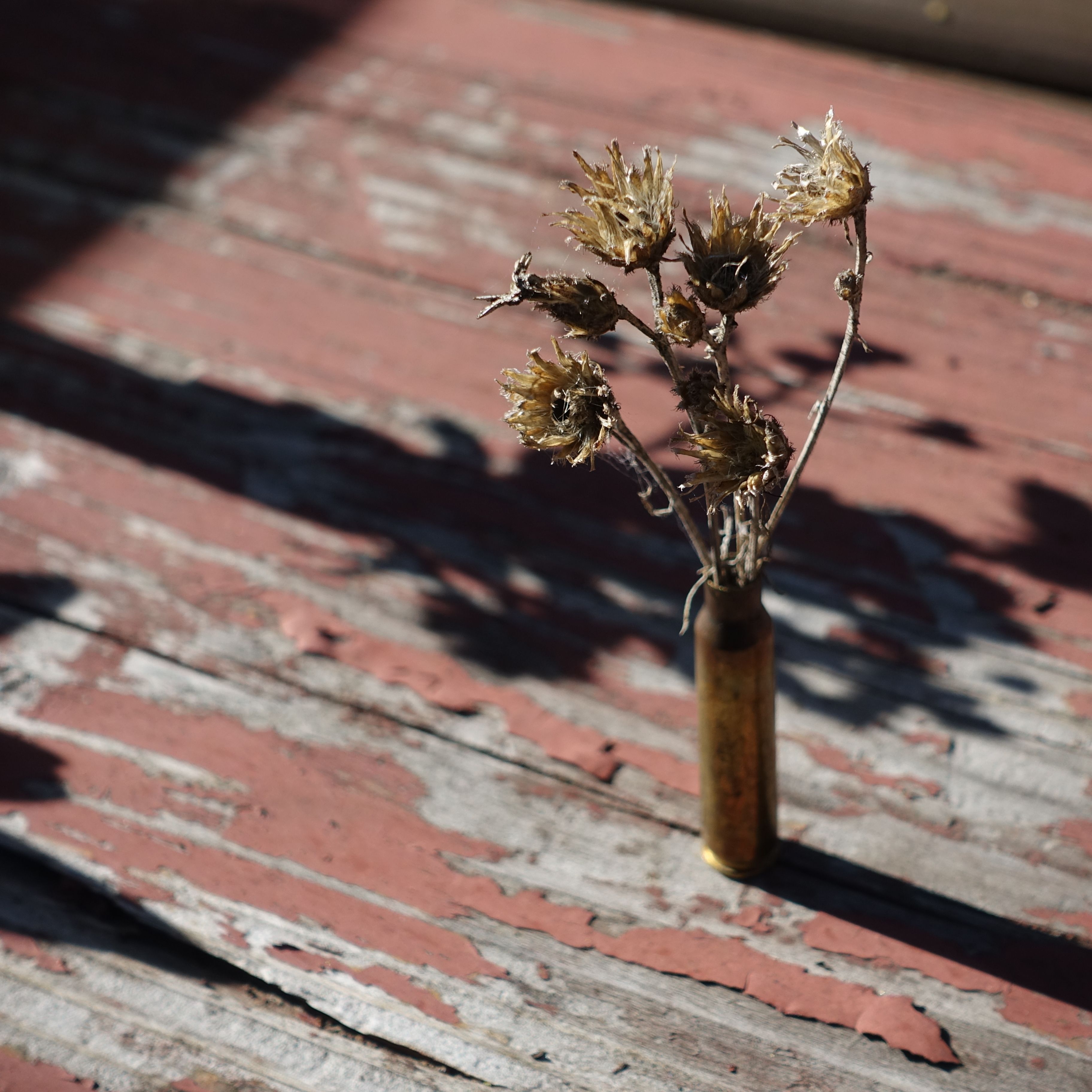
We understand learning as the process of acquiring knowledge. Names are the distinctive designations we apply to objects. To learn a name is to go out into the world and recognize a particular aspect of it. This week I spent my time learning names.
Brendan, Keller, and Paige. These are the designations of my new friends. I am reminded of the process of learning. I know my friends' faces, their sleepy looks in the morning, the contentment of a good day, the excitement of playing with a new toy. I know their faces, but do I know them? I hope to. We are still learning.
Spotted Knapweed, I know your leaves look like arugula and I recognize your dried flowers from a year past. We collect some, and use a bullet for a vase to display them on the picnic table. I can’t wait to see the purple hues you bloom. Leafy Spurge, your yellow flowers drape the fields and hug the riverside. I know you when I pluck a leaf or stem. Your latex sap oozes confirmation. St. John’s Wort, with pinpricks in your leaves. Squinting through those holes into an infinite blue sky. Studies have shown the hyperforin you hold is effective as an antidepressant. To see is one way to know, but what is sweeter than a taste? Common Mullein, your broad leaves lay out a canvas. I feel like Pollock or Hodgkin. They say you can spread a million seeds that last a hundred years. I learned the word fecundity this week. You embody it. Creative expression enables lifetimes, perhaps transcends them. I feel humility as I paint you blue.
Do plants have feelings? I got a copy of The Problem of Pain by C.S Lewis at a church yard sale last weekend. He says to speak of vegetative feeling is to use a mere metaphor. Wordsworth says that every flower enjoys the air it breathes. My new friends and I align with the latter. So what do we make of killing these names as we learn them?
Invasive species enter ecosystems primarily through human movement. Recreation, animal feed, and construction to name a few. For the sake of nature who is willing to forsake fishing, steaks, and townhouses? Invasive species, specifically in our work, noxious weeds, harm ecosystems in a multitude of manners. Noxious weeds, such as the names I have learned this week, compete with and often outcompete native flora. This native flora provides the foundation of subsistence for native fauna. Removal of native plant species is harming biodiversity from its leafy beginnings. In a healthy forest, organisms fulfill every ecological niche. When noxious weeds choke out native species the resulting monoculture can only fulfill its singular role. This deficiency becomes drastically apparent in our root systems. There is a whole world under our world. It’s hard not to take for granted those lives beneath us. Lack of root diversity reduces the stability of our soil, leading to increased soil erosion and water runoff. Without our foundation, the temple turns to ruin.
For these reasons, and many I am yet to learn, we can know that invasive species are harmful to native ecosystems. So, my new friends and I prepare ammunition of Escort, Milestone, and Tordon. These are names I have learned and do not know. Too far removed from a chemistry course to make sense of C6H3Cl3N2O2 or C6H4Cl2N2O2. We carefully measure, stir, and shake.
Take a second, go outside, and bury your face in the ground. Introduce yourself to the soil teeming with life. Bumble bees, spiders, and ants, so many ants. Brendan tells me there are 2.5 million ants for every human on Earth. Larva, parasites, bacteria, and microorganisms. I wish I could get closer, spending the afternoon with glass slides and field guides.
But, there is work to do. We are a Wildland Restoration Team part of Montana Conservation Corps. This week we have been contracted by the United States Forest Service to spray noxious weeds in Lolo Nation Forest. The paperwork is filed and grant money distributed, all that remains to do is send our crew out into the forest and fields to kill.
It might sound drastic or melodramatic, but what if we take to heart the impact of our work? We are killing, and we believe plants can feel. Not to mention the countless other organisms soon to be swallowing or swimming in herbicide. Suffering rains down in bright blue droplets. In the name of conservation and restoration.
I aim and shoot. Knapweed is not my enemy. You are a victim of humanity. We brought you here and you simply play out your programming. Spreading throughout the land, reducing biodiversity and soil integrity. Knapweed or humanity? Only one of us gets to play God. If I am God today let me be a benevolent one. I learn your names so I can pray to you. I pray for you.
Church bells ring as I walk myself home. We spent the night dancing to band names I don’t know. This feeling I do know, we call it gratitude. Grateful for life. Grateful to be making friends. Grateful to be doing work that is helping the land whose names I am learning. Can gratitude bear the weight of suffering? I hope so. Every flower enjoys the air it breathes. Take a moment, enjoy it.

![[Image Description: Four MCC members wade across a river. In the background, there are hillsides covered in gold from the quaking aspens, and deep green pine trees.]](https://cdn.firespring.com/images/bc3da824-0c18-4b37-a2dd-27ae52872fd1.jpg)



